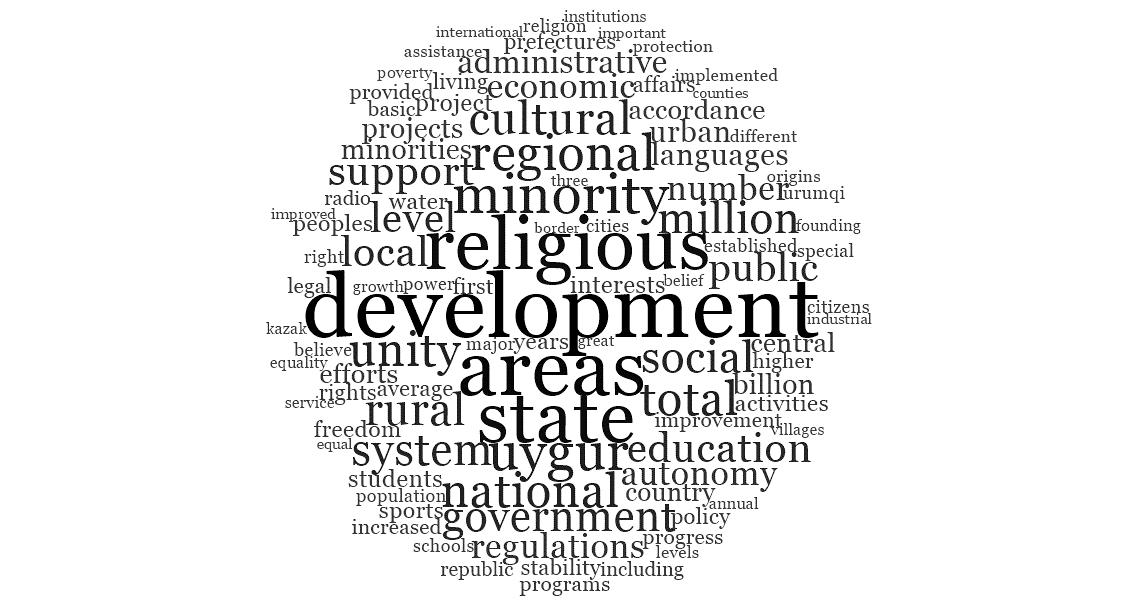Original document link: Click Here
Overview
This paper focuses on ethnic unity in Xinjiang and highlights the need to promote regional autonomy in regions with ethnic minorities and gives an overview of historical developments in the region. The overview begins from the Opium Wars (1840-1842) and goes over major events such as the enforcement of Measures for Exercising Ethnic Regional Autonomy, which initiated the process of establishment of an autonomous region in Xinjiang.
The paper has nine main sections:
I. Implementing the System of Ethnic Regional Autonomy
II. Upholding Ethnic Equality and Unity
III. Constantly Strengthening the Foundations of Development
IV. Improving Standards of Living for All
V. Promoting cultural prosperity
VI. Maintaining Social Harmony and Stability in Accordance with the Law
VII. Respecting and Protecting Freedom of Religious Belief
VIII. Promoting the Unique Role of the Xinjiang Production and Construction Corps
IX. State Support and Assistance to Xinjiang
The establishment of Xinjiang Uyghur Autonomous Region (XUAR) is declared as the “full implementation of the system of ethnic regional autonomy in Xinjiang”.
Some key numbers that were mentioned in the white paper include the number of total officials that belonged to an ethnic minority (51.4%). The number of mosques in Xinjiang, in 2014, was 24,400 with 28,600 clerical personnel.
The paper identifies “three forces (ethnic separatism, religious extremism, and violent terrorism)” from within and outside of China as responsible for terror and violence in the region.
In 2014, re-amended Regulations of Xinjiang Uygur autonomous region on Religious Affairs were issued to protect citizens’ freedom of religious beliefs. However, the regulation emphasized that all religious activities must be carries out within the boundaries prescribed by law and must not harm national security and interest.
The paper also highlights the role of Xinjiang Production Construction Corps (XPCC) has played in the development of the region and safeguarding national unification. It also highlights the support given to the region by the Central Government and lists the state’s financial grants to the region to total almost RMB 1.7 trillion. It concludes by emphasizing the importance of Xinjiang to the “Silk Road Economic Belt” by acting as a window to the West.
| 15 most common words: | |
|---|---|
| Word | Count |
| development | 72 |
| areas | 65 |
| religious | 60 |
| state | 60 |
| minority | 45 |
| uyghur | 44 |
| regional | 41 |
| national | 39 |
| total | 39 |
| unity | 39 |
| cultural | 38 |
| rural | 37 |
| system | 37 |
| million | 36 |
| social | 36 |
Word cloud:
(Minimum 5 letters)
